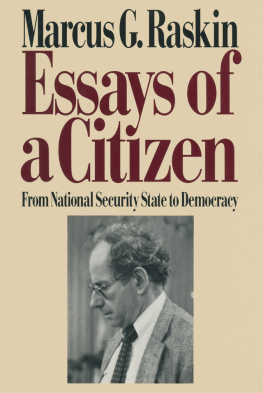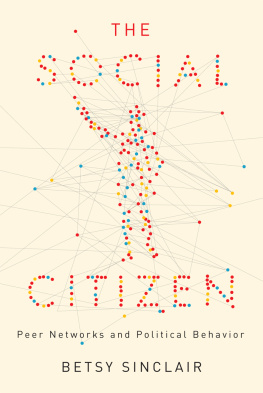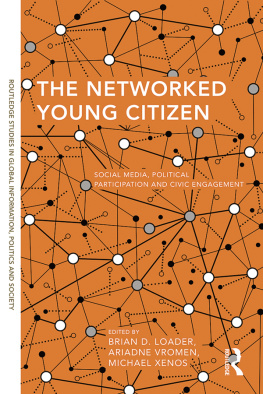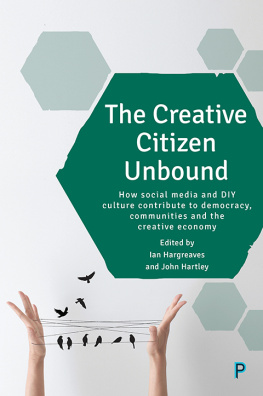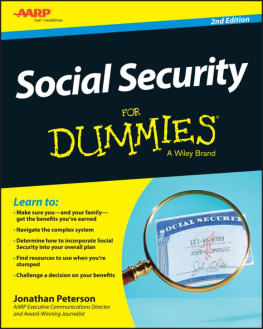The
SOCIAL SECURITY PRIMER
The
SOCIAL SECURITY PRIMER
What Every Citizen Should Know
Wallace C. Peterson
First published 1999 by M.E. Sharpe
Published 2015 by Routledge
2 Park Square, Milton Park, Abingdon, Oxon OX14 4RN
711 Third Avenue, New York, NY 10017, USA
Routledge is an imprint of the Taylor & Francis Group, an informa business
Copyright 1999 Taylor & Francis. All rights reserved.
No part of this book may be reprinted or reproduced or utilised in any form or by any electronic, mechanical, or other means, now known or hereafter invented, including photocopying and recording, or in any information storage or retrieval system, without permission in writing from the publishers.
Notices
No responsibility is assumed by the publisher for any injury and/or damage to persons or property as a matter of products liability, negligence or otherwise, or from any use of operation of any methods, products, instructions or ideas contained in the material herein.
Practitioners and researchers must always rely on their own experience and knowledge in evaluating and using any information, methods, compounds, or experiments described herein. In using such information or methods they should be mindful of their own safety and the safety of others, including parties for whom they have a professional responsibility.
Product or corporate names may be trademarks or registered trademarks, and are used only for identification and explanation without intent to infringe.
Library of Congress Cataloging-in-Publication Data
Peterson, Wallace C.
The Social Security primer : what every citizen should know /
Wallace C. Peterson.
p. cm.
Includes bibliographical references and index.
ISBN 0-7656-0373-X (hardcover : alk. paper)
1. Social securityUnited States. I. Title.
HD7125.P434 1999
368.4300973dc21 99-14346
CIP
ISBN 13: 9780765603739 (hbk)
To the Memory of
Eunice Vivian Peterson
Bonnie Belle Peterson
Contents
Social Security is the nations oldest and most successful social program. It was introduced by Franklin D. Roosevelts New Deal during the depths of the Great Depression, and millions of Americans now depend on it for retirement income, disability help, and medical assistance. There is hardly a person in the nation whose life is not touched by Social Security in one way or another.
We are living in a time when there also exists much skepticism about our government in Washington. Gone are the heady days of the past when Americans looked to the nations capital for the solution of almost any major problem. The government that not only led this nation to victory in two world wars and guided the country through the most devastating economic depression in our history is now seen by many citizens as inept, inefficient, and all too often wholly under the sway of powerful and corrupt special interests.
The great exception to this has been Social Security. Day after day, month after month, year after year, the system works smoothly, mailing out checks to millions of citizens, untouched by the scandals that beset other parts of the government in recent years. Politically, the Social Security System has become a sacred cow, now praised by all politicians, and virtually immune from political attack. Even Ronald Reagan, who began his political career believing that the system should be made private and voluntary, ended his career singing its praises.
Today, though, all this is no longer true. The system is in trouble, not because it is racked by scandal or because the checks are not being mailed. The trouble lies in the future, as millions of Americans fear that somehow, in some way, the system is going broke. Among young people the belief is common that when the time comes for them to retire sometime in the next century, the money simply wont be there. The hordes of baby boomers now in the workforce add to these fears. Like a pig in a python, the boomers represent a huge bulge in the nations population profile, certain to put a strain on the system when they begin to enter the ranks of the retired in the twenty-first century.
Worries about the future of the system were compounded in late 1989 when New York Senator Daniel Patrick Moynihan tossed out a political bombshell with his suggestion that the payroll tax that bankrolls Social Security be scaled back. His proposal, coupled with angry arguments about Social Securitys Trust Fundstheir uses and misuses, touched off a major debate about the nature, safety, and future of the system. This debate is destined to continue well into the future. There is irony here, for at the start of the 1980s it was believed that a bipartisan commission headed by Alan Greenspan, now chairman of the Federal Reserve System, set the direction for congressional action that fixed the system for a long time to come. What was then fixed seems to be unraveling.
It is the purpose of this book to deal with and explain these matters as clearly, precisely, and accurately as possible. This is not a long academic treatise on Social Security. The books aim is to make understandable for the busy and concerned citizen how the system really works; what is the nature of the current crisis, if any; and what needs to be done. The emphasis is upon the nuts and bolts of the system, what it means to you the reader today, and what it is going to mean when you retire. The bottom-line question this book seeks to answer is Will Social Security be there when you need it?
The book is organized into five chapters. , How to Save Social Security, offers solutions to the problems of the system, including analysis and comment upon the political action needed.
The
SOCIAL SECURITY PRIMER
The belief that the future of Social Security is gravely threatened is rooted in a demographic factthe enormous bulge in the nations population represented by the baby-boomer generationand the fears aroused as the boomers proceed inexorably toward retirement sometime in the next century. Among the boomers themselves, many have doubts about the viability of the system, even to the point of believing that the system will be essentially bankrupt when they reach retirement. Books like The Coming Collapse of Social Security, along with numerous articles in newspapers, the weekly newsmagazines, and other publications, add to these fears.
There is no doubt that the nations Social Security system is facing serious problems in the not-too-distant future, but whether these problems constitute a crisis that threatens the viability of the system is problematical. In this chapter we shall take a thorough and critical look at all dimensions of the problem, beginning with a thorough look at the population group that is the source of the concernthe baby boomers.
The term baby boomers is the popular description of the group of people, some 75 to 76 million strong, born in the twenty-year span from 1945the end of World War IIto 1965. This cascade of babies constitutes the largest single bulge ever recorded in Americas population structure. Most boomers are now approaching the 5059year-old age group, while the first boomers will reach retirement age around 2010, assuming 65 continues to be the standard retirement age. Table 1.1 traces that path of the boomers from birth through their retirement years, from 1945 until 2030, when most of the surviving boomers will be in their 80s. This table charts the life course of the approximately 37.5 million born in the first baby-boomer decade, 1945 through 1954. Persons born in 1954 will retire in 2019, but the last of the boomers (those born in 1964) wont enter retirement until 2029. After 2029, the retirement-age population will begin a rapid decline as the baby-bust population approaches retirement.






